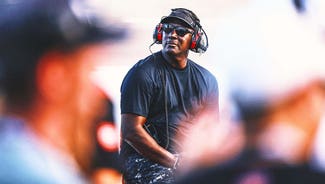
NASCAR continuing safety follow-up
While NASCAR’s investigation of last Saturday’s Nationwide Series crash at Daytona International Speedway that injured at least 28 is still in the early stages, the sanctioning body is exploring various avenues to safeguard against similar mishaps in the future.
On Saturday at Phoenix International Speedway, vice president of operations Steve O’Donnell said safety remains the “first and foremost” priority of NASCAR and its racetracks. O’Donnell said a collaborative effort is under way to “get it right” so race fans “can enjoy the most safe and entertaining environment as possible.”
The two main areas of focus are the No. 32 Turner Scott Motorsports Chevy of Kyle Larson and the barrier and fence that caught his car.
NASCAR has been in discussions with DIS since immediately after the incident. According to O’Donnell, Daytona management has brought in an outside firm to analyze the current structure and what advancements can be instituted. The next Sprint Cup restrictor-plate race is scheduled for May 5 at Talladega, and O’Donnell says anything learned in the interim will be applied to the track.
The sanctioning body has also enlisted a group of experts, including Dr. Dean Sicking, director of the Midwest Roadside Safety Facility at the University of Nebraska, and partners from Indianapolis Motor Speedway with thorough understanding of SAFER barriers. Although Talladega takes precedent, all of the current NASCAR tracks will be included in the study.
While Larson’s car was initially impounded at Daytona to “see what, if anything, they could glean from that investigation” and further apply it to fencing research, O’Donnell said the car was being transported to NASCAR’s R&D Center in Concord, NC.
O’Donnell said he was relieved “that most of the safety elements in that car did their job” and Larson walked away from the crash. But the greater concern is “if the elements in the car did their job, what do we need to do to the impact to the fence?” O’Donnell said. “What happened once that car impacted the fence?”
Representatives from Turner Scott Motorsports have yet to examine Larson’s car. O’Donnell said NASCAR wants to discuss the fabrication on the car to see what both parties can learn from the process.
“The next steps will be putting that car back together,” O’Donnell said. “We'll use any and all technology we can ... video, cameras. The benefit to us in this situation is if you look at Daytona, all the camera angles, all the video technology that's out there, we have the most technology we've ever had to be able to apply to this incident. So we're going to use that and apply that and hopefully learn from that as well.
“We'll go through each part of the car. Want to look at how everything held up that was in the car, the cockpit, the tethers. There's been talk if the tethers broke away or not. They did not. However, when you look at the car, the part that the car was tethered to sheared the car. That's something we have to look at in advance. We've tethered a number of different things as we’ve learned and added things to the safety aspects of the car, but what do we need to do in addition to that when we look at this accident specifically?”
Jeff Burton said he would like to see “a thorough investigation” of the accident. Burton, 45, began racing in the Cup Series long before head and neck restraints were mandatory and SAFER barriers became common at NASCAR’s top sanctioned tracks.
While Burton said the parts and pieces that ended up in the grandstand from the No. 32 Chevy “was a fluke accident,” he doesn’t believe that to be the case for Larson’s being launched into the fence.
“We have seen several cars get airborne,” Burton said. “(Brad) Keselowski and Carl Edwards at Talladega, then you go back. … Keselowski and Carl (Edwards) at Atlanta, that car got up in the air. So I don’t want to say that getting in the air is a fluke. I think we need to work harder on keeping the cars on the ground, which this car, honestly, has a lot more work done on that.
“As far as the fencing, you have to stop and do research and understand how to do it better. Everybody wants to fix it today, but the right way to fix it is through a thorough analysis. Do a thorough analysis, get all the information, then make a decision. I think everybody, meaning well, wants to try to say, ‘Here is what you need to do,’ but until you really understand it, it is hard to know what to do.”
Burton has long been a proponent of safety and doesn’t subscribe to knee-jerk reactions. While he applauds NASCAR’s efforts over the years, Burton said he understands that just because the sport enjoys a period of calm, the community can never afford to become complacent about safety research.
“Safety is not a goal,” Burton said. “It’s not something you can reach. It’s a continuing effort. It’s a continuing mindset; it’s a continuing desire to be better at it. You can’t say, ‘OK, we are here’ and move on. By no means am I saying NASCAR has done that. I think NASCAR deserves a tremendous amount of credit. I think they have led motorsports as it relates to safety over the last 10 years. …
“In no way am I saying NASCAR has been not being aggressive, but it is a reminder that we have to continue to be. It’s a reminder that we have to always be looking to be better.”

